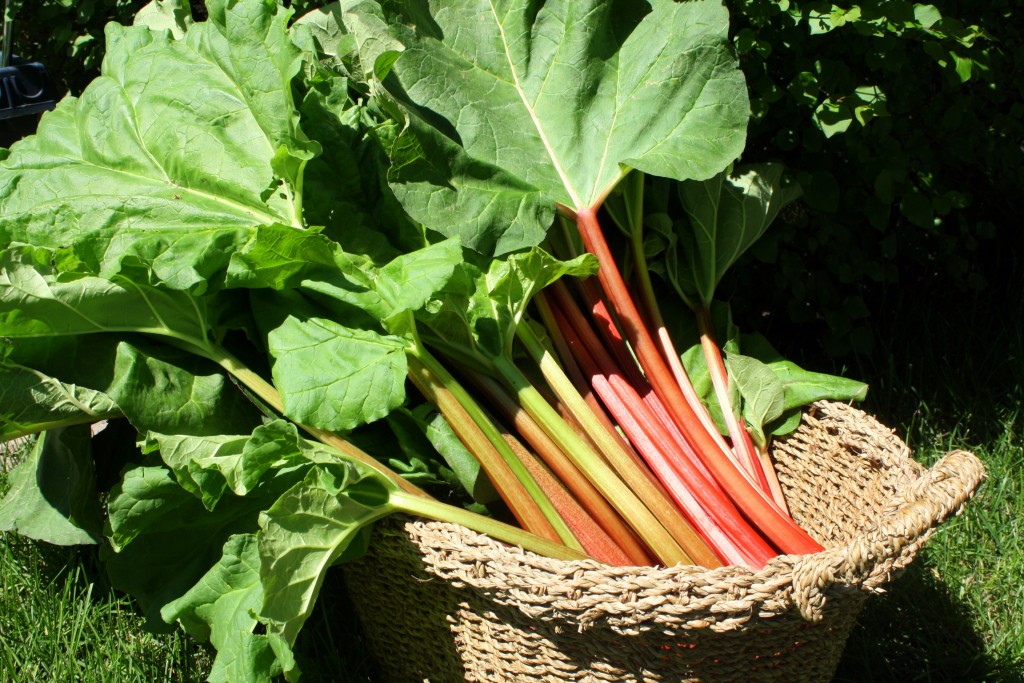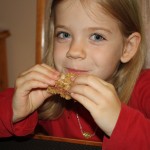A great article about Fruit Share and well, yes me! http://www.wrha.mb.ca/wave/2011/05/getty-stewart.php
Novel idea bears fruit
Riverview woman’s food sharing plan helps build community
BY BOB ARMSTRONG
Winnipeg Health Region
Wave Magazine, May / June 2011
A carpet of rotting apples beneath a fruit tree is more than just an unsightly magnet for wasps to Getty Stewart.
It’s a waste of food and a lost opportunity to bring neighbours and communities together.
That feeling is what prompted the Riverview mother, home economist, activist and blogger to launch Fruit Share, a volunteer program that connects people who own fruit trees with volunteer pickers and social agencies.
Her work with Fruit Share, combined with her popular gardening blog and the initiatives she’s spearheaded as president of the Manitoba Association of Home Economists, earned her a Healthy Living Award at a ceremony in April sponsored by the Reh-Fit Centre Foundation.
Living in the Riverview area, where many homes have apple trees, she knew that a lot of delicious fruit goes to waste every year because owners of trees don’t have the ability, time or energy to pick their apples, or don’t know what to do with the fruit. When she read of a program in Edmonton called Operation Fruit Rescue that connects pickers with unused fruit, she wondered if it would work in Winnipeg. After connecting with the South Osborne Urban Community Co-op, she decided to give it a try last May.
The results in the first year were beyond her expectations. She and her 10 volunteers picked nearly 1,700 pounds of apples, as well as rhubarb and Evans cherries (a large, sweet, bright-red kind of sour cherry). She stresses that the apples were in most cases full size and sweet, noting “We didn’t pick any crab apples at all.”
The program is all about sharing nature’s bounty. Owners of the trees and the volunteer pickers each receive one third of the fruit. The other third is shared with social agencies, including the nearby Fred Tipping Place seniors’ housing complex. Agape Table, Siloam Mission and other agencies also reaped sweet rewards.
Last year, the program focused just on the Riverview/Osborne area. This year, with approximately 40 volunteers already signed up by late April, Stewart is expanding Fruit Share to Wolseley, West Broadway, St. Vital, Daniel McIntyre, St. Mathews, Spence and North End neighbourhoods, where the program will partner with local community development organizations.
She hopes to harvest 7,000 pounds of fruit this year.
Stewart sees sharing food as a unique way to build community. She recalls how a trip last year to drop off apples at Siloam Mission was a profound experience for her whole family and relishes the connections she made with residents at Fred Tipping Place. “They started recognizing me as The Fruit Lady.”
Using the fruit that would otherwise go to waste is also a way of rediscovering knowledge about the environment and food that many of us have lost. She notes that many people with cherry trees in their yard aren’t even aware that the fruit is edible. “It takes me back to when we used to go to the Souris Riverbend and pick chokecherries,” she says, recalling her childhood on a farm family in the Wawanesa area.
Her formative experiences as a farm girl are also part of what prompted her to create her Manitoba Veggie Delight blog about gardening.
“I wanted to get the kids to experience gardening and have that appreciation of where food comes from,” she says. “That’s the farm girl in me. I just love to have dirt under my fingers.”
After gardening a community plot near Churchill Drive for the last four or five years, last year she began blogging about what she was planting, what weeds she was pulling, what insects were nibbling at her veggies and how the harvest was coming.
“It’s a mix of techniques, tips and advice,” she says. “As I was blogging, all the things that I learned as a kid on the farm came back to me. I remembered all the things that my parents taught me about gardening and I was thinking, ‘What will my kids learn from this?’”
And it’s not just her kids, Aidan, 10, and Melanie, 7. Last year the blog had hits from about 300 people per month.
That combination of new technology and old-school appreciation of growing food is carrying over into another project: a booklet on harvesting backyard fruits and berries. Stewart has received funding from the Manitoba Alternative Food Research Alliance and the Canadian Home Economist Foundation to prepare a booklet to show people how to identify what kinds of fruits or berries they have in their yard and give them ideas of what to do with them.
The booklet will include recipes, tips on preserving fruit, information on how to get help with harvesting and details on how to share the backyard bounty with social agencies. The last point is a significant one, she says, because not all agencies accept preserves or baked goods (though some do) and there may be a specific time and place to take donations.
The booklet will be posted on the Fruit Share website, as well as be available through Fruit Share’s partner organizations.
While Fruit Share and the gardening blog are focused on growing food, Stewart also is involved in a program that sells locally grown food.
As president of the Manitoba Association of Home Economists, she has helped to develop the Farm to School Healthy Choice Fundraiser, in partnership with Peak of the Market and the Manitoba government.
The idea is simple. Instead of selling chocolate bars to raise money for school programs – an awkward fit with the effort by schools to promote healthy eating – participating schools sell bags of Manitoba-grown vegetables from Peak of the Market. Peak of the Market, the Manitoba vegetable marketing company owned by producers, sells the veggies to the schools at cost and provides free delivery to the school.
Last year the program was piloted in 66 schools in urban, rural and northern Manitoba. Feedback was so positive that this year it’s spreading to every school in the province. And many of those schools have incorproated the veggies into lessons on food and nutrition.
During her time as president, Stewart has also worked to raise the profile of home economists – and spread the news about healthy family activities – through a monthly Home and Family segment on Breakfast Television.
Getty’s emphasis on a healthy balance between work, family, and community is something she shares with her husband, Darryl, who runs a business called Ibex Payroll that the couple founded before they had children.
At one time, she found herself juggling motherhood with work at Ibex and her own work in a public speaking business she operated for 12 years.
“It was hectic and rushed and I thought, ‘There’s got to be a better way.’”
She’s still involved with the company – she’s listed as “Head of the Home Range,” one of many quirky job titles that staff at Ibex have on their business cards – but focuses more of her energies on family and community. And she still makes sure to set aside volunteer work for healthy activity, whether taking in a fitness boot camp at the Riverview Community Centre or leading hikes as camp naturalist this summer at Camp Wasaga near Riding Mountain National Park.
It’s all part of her belief that healthy living is found in a balance of social, physical, and emotional well-being – and that healthy living requires getting involved to make it happen.
“We’ve got to create the kind of world we want for ourselves,” she says.
Bob Armstrong is a Winnipeg writer.

 Filed Under :
Filed Under :  Jun.30,2011
Jun.30,2011

